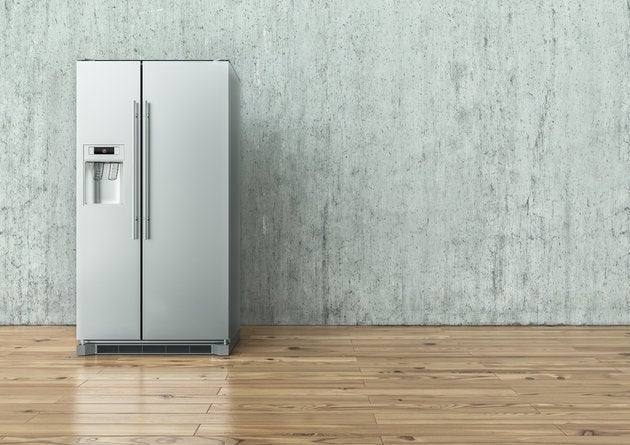Not only can smart home upgrades make you feel like a boss, they can slash your carbon emissions, too.
Boosting your place’s tech credentials means more efficient appliances that go through less energy – tightening up your waste and going gung-ho on that eco life.
Given that domestic energy use in the UK accounts for over a quarter of our CO2 emissions, according to the Energy Saving Trust’s 2012 ‘Powering The Nation’ report, it’s clear that this a serious route to living greener.
And you don’t need to spend thousands to make your home smarter. A range of add-ons can dial up the future-facing readiness of your place, without massive expense.

Take control of your energy use
Taking control of how much energy your home is using is key to living smarter. Because we now have so many more devices in our homes (iPads, voice assistants…) than we used to, it’s more important than ever to track how much power we’re going through.
Smart meters help you do just that. Rather than taking down meter readings and sending them off every month, your readings are sent automatically. (Bonus: they’re also free to have installed.)
Your meter comes with a Smart In-Home Energy Display (IHD) that fills you in – in pounds and pence or kilowatt hour (kWh) – on how much energy you’re using at any given time. Keeping tabs can keep you on track with your energy-saving goals, meaning a home that you’re managing, well, smarter.
The IHD also lets you set a budget, so you can see if you’re spending more than you intended.
A smart meter could be available through your energy supplier, so check with them to see if you are eligible. If you’re an E.ON customer, head here to book in an appointment to have one fitted.

Spy on your fridge
We’re not advising getting a smart fridge immediately – those things are pricey. We are suggesting a far cheaper solution: a fridge camera. No, not some weird device intended to shame you for midnight raids. Instead, it’s a tool in the battle against food waste.
FridgeCam – to give it its official name – lets you view everything in your fridge via an app. It also has a best before tracker, so you can keep on top of what’s about to go off and therefore nailing your ‘stop wasting food’ mission.
Why bother? Because data from waste advisory body WRAP shows that household food waste increased between 2012 and 2015 – 4.4 million tonnes versus 4.2 million tonnes, or an extra 2.8% per person. This avoidable waste was ‘associated with 19 million tonnes of CO2e, which is equivalent to the emissions generated by 1 in 4 cars on UK roads,’ according to the Household Food Waste in the UK 2015 report.
FridgeCams are available from specialist retailers.

Install smart lighting
How many times have you arrived at work and remembered that the lights in the bathroom are still on? Not so green. Getting smart lighting, which senses when someone enters and leaves a room, means an end to the issue. The most well-known system is Philips Hue, which has a starter kit for around £60.
Send your devices to sleep
Standby mode. Chances are, your TV, laptop and speakers are on it right now: and leaking out energy faster than you can say ‘inefficient.’ (In fact, 9-16% of the electricity we use in our homes is used to keep devices going, when they’re in this mode.)
To stop your computer from wasting electricity, try an EcoButton. These plug into a USB adaptor, that, when you leave to go and do something else, send your device into the most energy efficient mode it can reach. When you return, it powers back up.

Try an eco kettle
If your kettle is about to pack up, consider making your new one a green version. Thermal insulated kettles are a combination of a Thermos flask and a kettle – so they keep boiled water hot for up to four hours, meaning fewer boils in a day.
If your kettle still has life in it, make sure that you always measure out how much water you actually need in cups (two people = two cups), rather than heating up a load of water that just sits and goes cold again.
Discover more about how E.ON could help you live a more energy efficient and sustainable lifestyle, here.